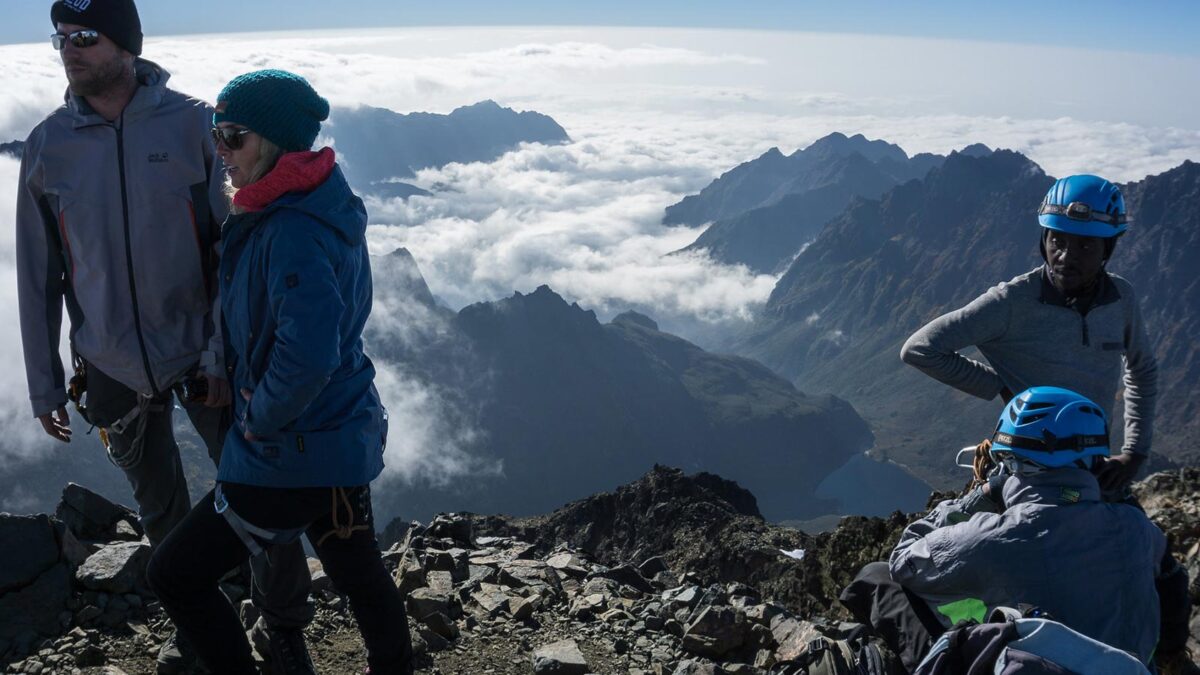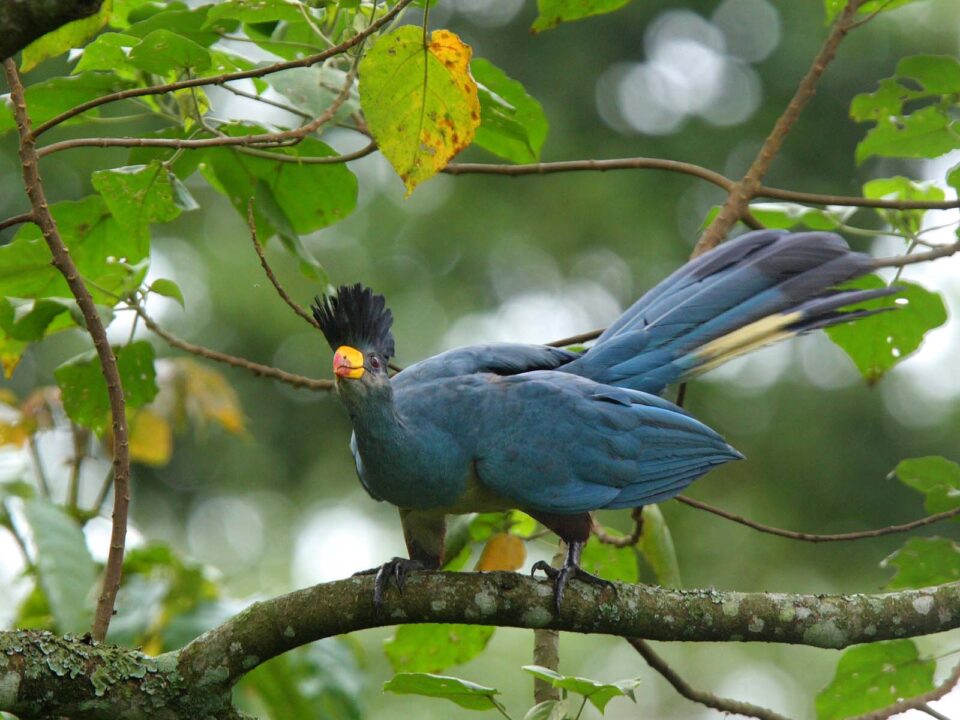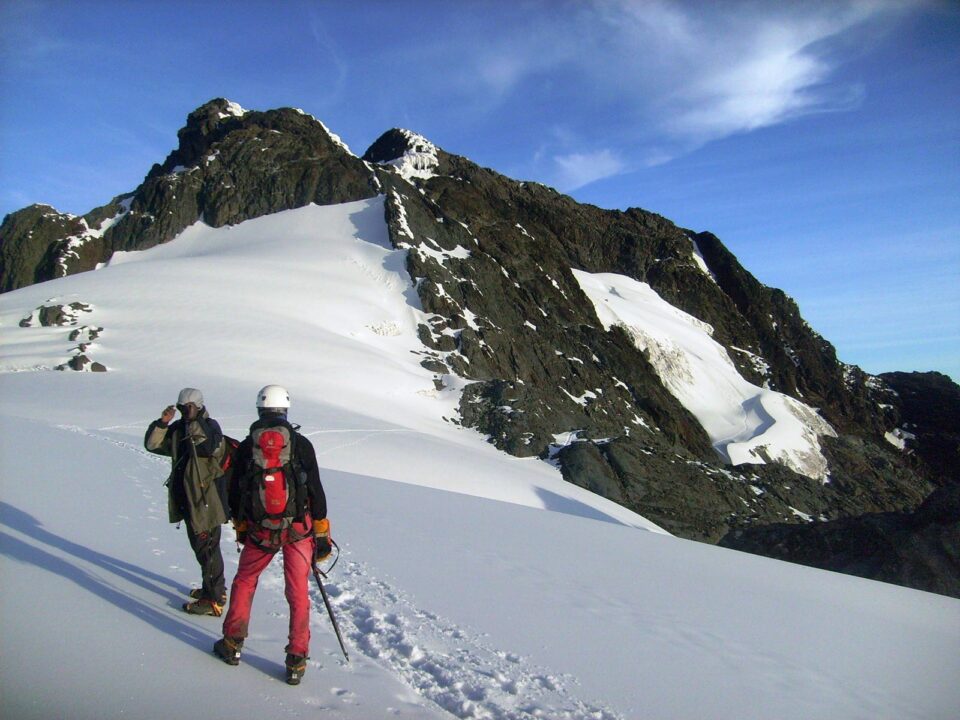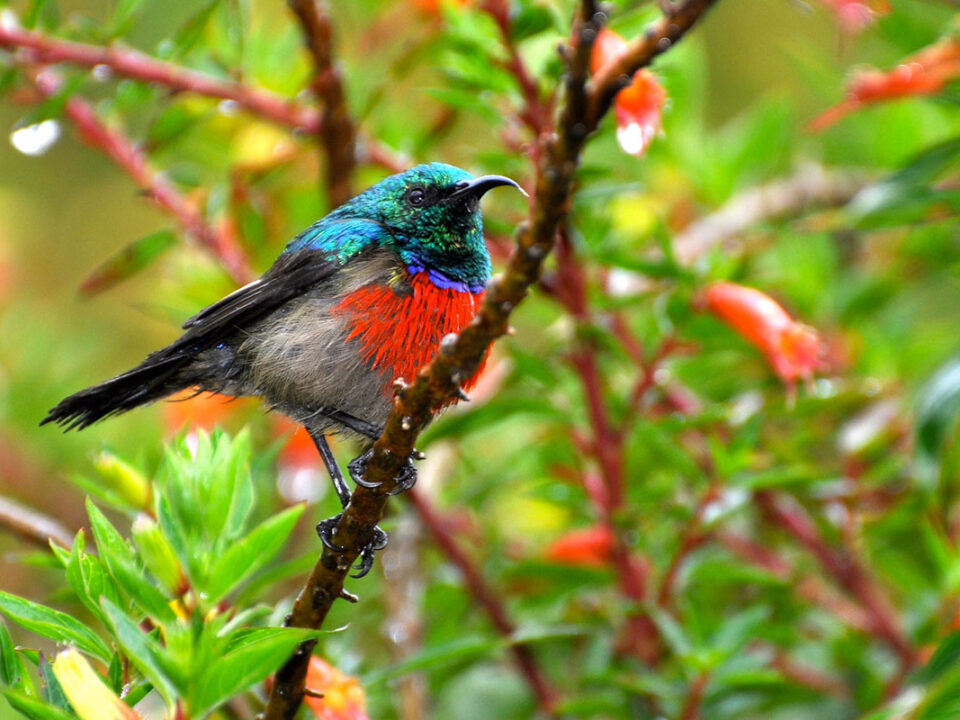Travel Guide to Rwenzori Mountain National Park

Toro Semliki Game Reserve
September 8, 2023
Kenya Safaris to Saiwa Swamp National Park
September 8, 2023A Journey Through Rwenzori Mountain National Park: Hiking Adventures Await
Discovering the Rwenzori Mountains
Rwenzori Mountain National Park, an adventurer’s paradise, beckons those seeking thrilling hiking experiences. Located approximately 400 kilometers from the heart of Kampala, in western Uganda, the park stretches across Kabarole, Kasese, and Budibugyo districts. This natural wonder takes its name from the majestic Rwenzori Mountain ranges, the third-highest snow peaks in Africa, encompassing six distinct mountains: Stanley, Emin, Gessi, Savioa, Speke, and Baker. Comprising a unique vegetation zone with bamboo, moist montane forest, moorland, and more, this UNESCO World Heritage Site covers about 1000 square kilometers. The park is renowned for its rare plant species, diverse wildlife, including over 70 mammal species, 217 bird species (19 of which are Albertine rift endemics), enchanting waterfalls, and the awe-inspiring Rwenzori mountain ranges.
Embarking on a Hike of a Lifetime
For those seeking the ultimate hiking challenge, conquering the Rwenzori Mountains is an unparalleled adventure. The journey to the Margherita peak, the highest point, typically spans around nine days or more and demands a high level of physical fitness. These legendary “Mountains of the Moon” were designated a National Park in 1991 and are managed by the Uganda Wildlife Authority. The park’s headquarters are located in Nyakalenjija village along the Mubuku valley. It’s worth noting that the Congolese part of the Rwenzori is also part of the Virunga National Park.
Unveiling the Mystical History
The history of the Rwenzori National Park is intertwined with the exploration and quest for knowledge. The Greek geographer Claudius Ptolemy, in 150 AD, spoke of the “Lunae Montes” or the “Mountains of the Moon.” These high mountains covered in snow were believed to be located in the heart of Equatorial Africa and were thought to be the source of the Nile River. The name “Mountains of the Moon” is derived from the belief that these mountains marked the edge of the known universe. The name could also be linked to the Arabic “Jebel Al Kamar,” meaning “White Mountains,” referencing the snowy peaks. Locally, the people living in the mountains refer to them as “Rwenzori,” which means “rain maker” or “Rain Mountains” in the Bakonjo language. The Baganda people, who could see the mountains from a distance, called them “Gambaragara,” meaning “My Eyes Pain,” referring to the shining snow.
Fauna and Flora Riches
Rwenzori Mountains National Park is a haven for biodiversity. The park is home to 70 species of mammals, including Angola colobus, black and white colobus, L’Hoest monkey, chimpanzees, forest elephants, hyrax, leopard, yellow-backed duiker, golden cat, genet, giant forest hog, and bushbuck. While the number of mammals may not be high, they can be found in the lower mountain forest zone. Bird enthusiasts will be delighted by the 241 recorded bird species, with 19 of them being endemic to the Albertine rift. Species like the Rwenzori Turaco, malachite sunbird, long-tailed cuckoo, long-eared owl, handsome francolin, cinnamon-chested bee-eater, robin, montane Boubou, slender-billed starling, and black eagle grace the skies of the Rwenzori.
Activities for the Adventurous
Mountain Climbing:
For the intrepid hiker, the Rwenzori Mountain range offers an unparalleled adventure. Traversing distinct vegetation zones, encountering glaciers, and reveling in breathtaking vistas are all part of the journey. Climbing Mount Stanley, Mount Speke, Mount Baker and others is a test of physical endurance and offers a unique connection with nature.
Nature Walks:
If reaching the Margherita peak is not on your agenda, nature walks provide a delightful alternative. Explore diverse plant species, engage with Bakonzo communities to learn about their cultures and traditions, and soak in the natural beauty of the park.
Birding Trips:
With over 217 bird species confined within the park, birdwatchers are in for a treat. Spot exotic birds such as barred long-tailed cuckoo, Rwenzori Turaco, slender-billed starling, and many more on birding excursions.
Cultural Encounters:
A visit to the local communities surrounding the park offers a chance to immerse yourself in African cultures. Learn about the daily lives, traditions, and even participate in drumming and unique dances. Ruboni village is a great place to explore the local way of life.
Choosing the Right Time
The Rwenzori Mountains National Park can be visited year-round, but the best time for hiking is during the dry seasons, from June to August and December to February. These months offer more favorable trekking conditions. However, it’s essential to be prepared for changing weather patterns as the Rwenzori’s climate can be unpredictable. Temperature ranges from 5 to 20 degrees Celsius.
Getting There
Rwenzori National Park is located approximately 400 kilometers from Kampala, bordered by Fort Portal, Kasese, and Budibugyo districts. You can reach the park by road or air.
By Road:
Two main routes provide access:
Route 1 (Kampala to Fort Portal via Mubende): This 361-kilometer journey takes you through Mityana, Mubende, Kyegeggwa before entering Kibale Forest National Park and finally reaching Fort Portal. Turn 8 kilometers before Kasese town to access the mountain range.
Route 2 (Kampala to Kasese via Mbarara-Bushenyi): Covering 384 kilometers, this route passes through Mpigi, Masaka, Lyantonde, Lake Mburo National Park, Mbarara, Kalinzu forest, Kyambura gorge chimpanzee escarpment, Queen Elizabeth National Park, and Kasese town.
By Air:
Domestic flights operated by Aerolink Uganda and Kampala Executive Aviation can take you to Kasese airstrip, conveniently located near Rwenzori National Park.
Where to Stay
There are various accommodation options to suit different preferences:
- Hotel Margherita: Situated at the base of the mountain near Kasese town, this hotel offers not only accommodation but also a Rwenzori experience.
- The Rwenzori International Hotel: Located about 3 kilometers from Kasese airstrip, this establishment provides a range of rooms and camping options.
- Kitara Lodge: Found 16 kilometers from Katunguru gate of Queen Elizabeth National Park, this lodge focuses on environmental conservation and uses renewable materials in its construction.
- The Equator Snow Lodge: Offering luxury accommodation at the base of the mountain, this lodge features cottages built using river rocks from the nearby Mubuku River.
- Tropical Savanna Guesthouse: Ideal for budget travelers, this guesthouse is located in Kasese Town along the Mbarara-Kasese route.
Rwenzori Mountain National Park offers a thrilling journey through lush vegetation, unique wildlife, and a rich cultural tapestry. Whether you’re an avid hiker, birdwatcher, or cultural enthusiast, this national park promises an unforgettable experience amid the “Mountains of the Moon.”




